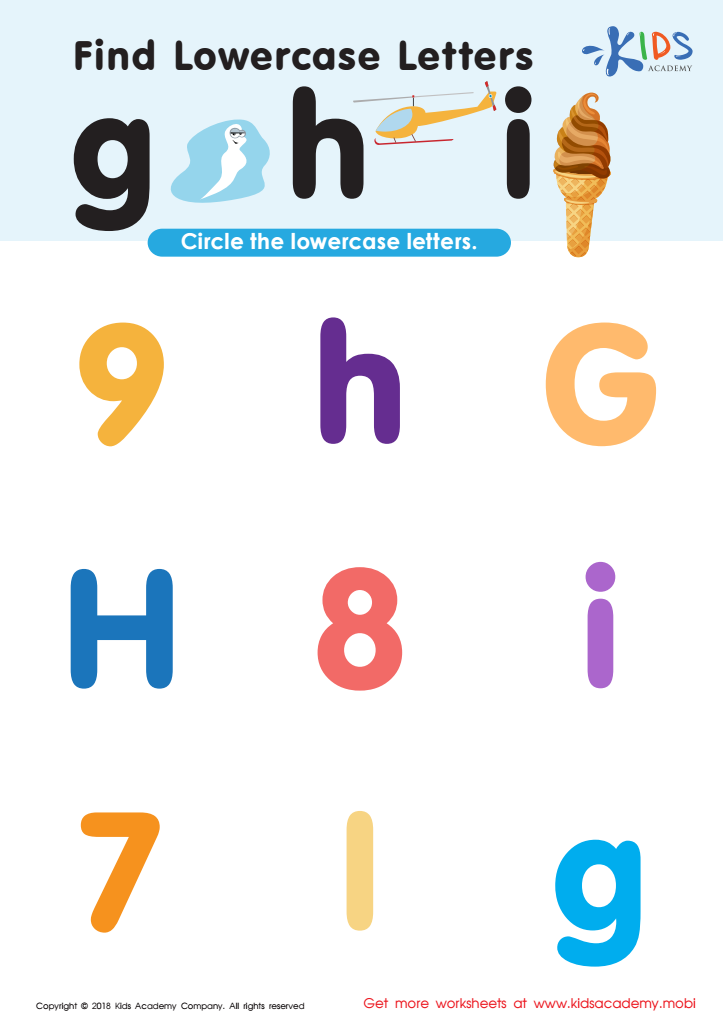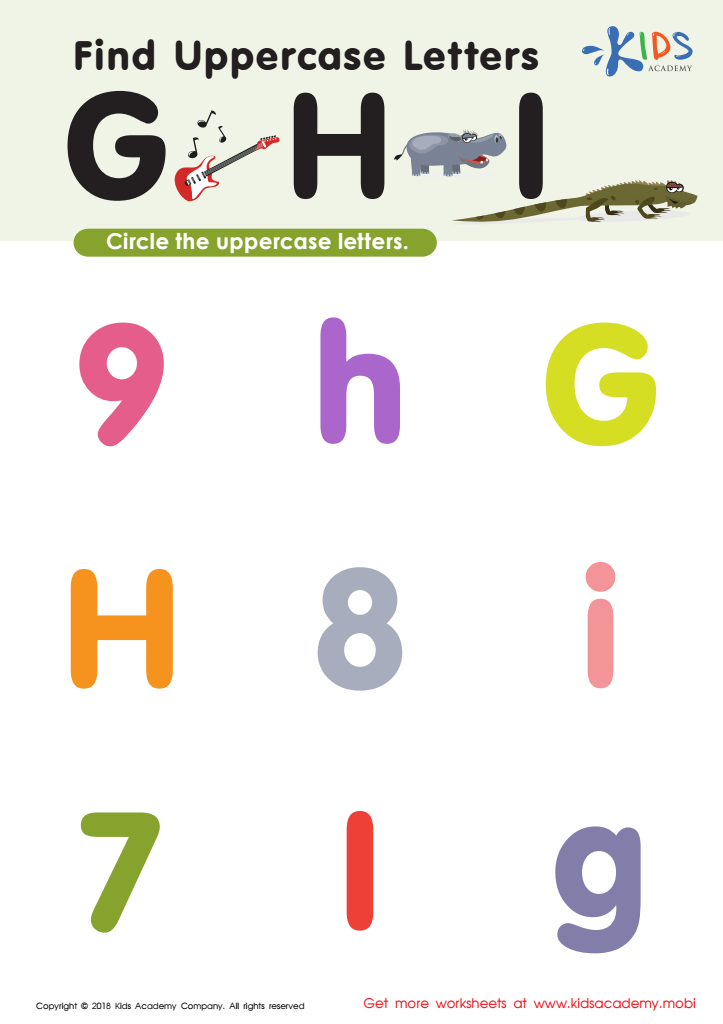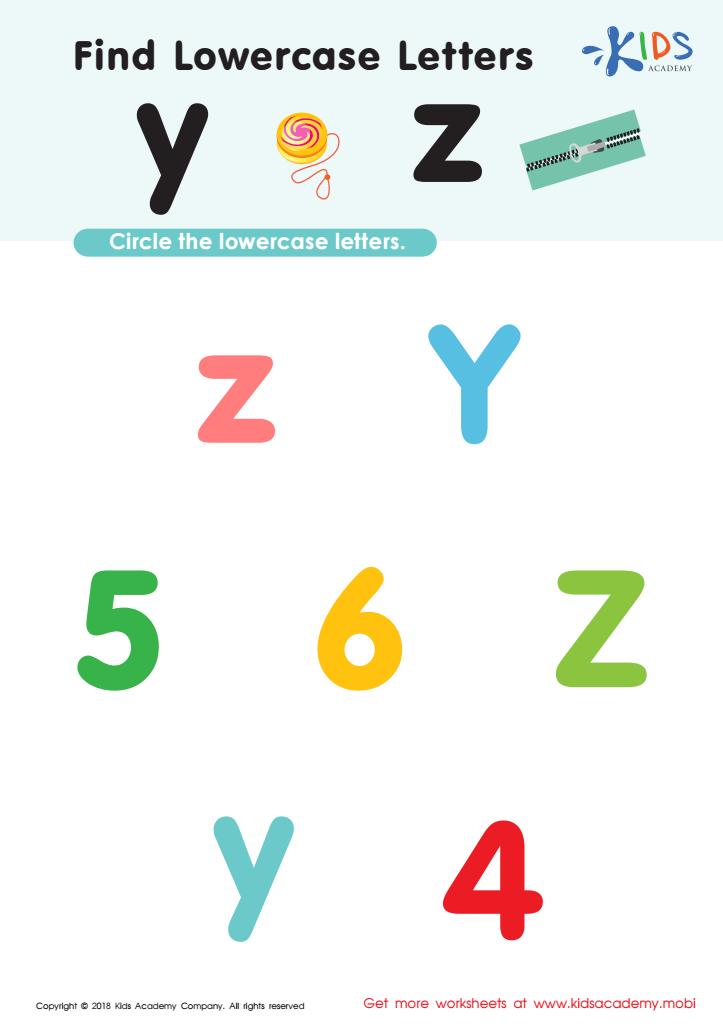Visual discrimination Normal Upper & Lowercase Letters Worksheets for Ages 4-7
4 filtered results
-
From - To
Enhance your child's visual discrimination skills with our engaging worksheets designed for ages 4-7. Our "Visual Discrimination: Normal Upper & Lowercase Letters" resources help young learners distinguish between uppercase and lowercase letters through fun and interactive activities. These worksheets promote essential literacy skills, aiding children in recognizing letter differences, which is crucial for reading development. Each activity is tailored to encourage focus and refine visual processing, making learning enjoyable. Perfect for parents and teachers, these printable worksheets provide an effective tool for reinforcing alphabet recognition while fostering confidence in young learners. Download now and set the foundation for literacy success!


Find Lowercase Letters g h i Worksheet


Find Uppercase Letters G, H, and I Worksheet


Find Lowercase Letters y z Worksheet


Find Uppercase Letters V, W, X Worksheet
Visual discrimination is a fundamental skill that children ages 4 to 7 need to develop for reading and writing proficiency. This skill, which involves the ability to differentiate between similar letters and shapes, is critical as young learners begin to recognize both upper and lowercase letters. When parents and teachers nurture visual discrimination, they contribute significantly to a child's literacy development.
Understanding and identifying letters correctly lays the foundation for reading. For instance, distinguishing between letters like “b” and “d” or “p” and “q” can be challenging for young learners. If children struggle with recognizing these differences, it may lead to difficulties in reading, writing, and spelling, potentially hindering their overall academic success.
Furthermore, strong visual discrimination fosters confidence and encourages engagement in learning. By helping children refine this skill, parents and teachers can support better comprehension and expression. Engaging activities—like letter sorting, matching games, or even playful drawing exercises—can be integrated into home and classroom settings to strengthen these skills. In essence, prioritizing visual discrimination in early education not only enhances literacy but also lays the groundwork for lifelong learning and curiosity.
 Assign to My Students
Assign to My Students












